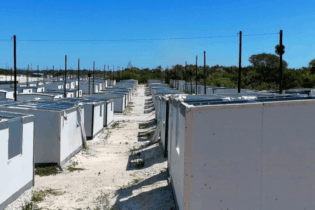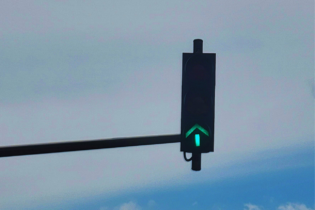Although the construction industry has largely remained static for the past two years, growth in office, retail and other non residential construction has been negative, the residential housing market is expected to increase by just two percent during 2012. Corobrik remains resilient and is looking to the launch of new products and growth in the affordable housing sector to maintain its strong performance.
Dirk Meyer, managing director of Corobrik, said that the R500 million that company invested in its manufacturing operations prior to the building downturn in 2007, the implementation of energy efficient and environmentally responsible operating systems as well as ongoing training and development of staff had proved a strong foundation on which to build. As a result, Corobrik has the capacity and flexibility needed to continue growing in uncertain, unpredictable and sometimes shrinking markets. “We will preserve our core values and protect our position in our core markets. On the manufacturing side, we remain focused on driving down manufacturing costs, driving up product quality and optimising flexibility. This will not only enable us to continue to grow market share in established markets, but also expand market share in affordable and low cost housing markets as well as expand our footprint in the paving market,” he said. Corobrik looks to innovationOver the past 20 years, the low cost and affordable housing markets have been dominated by cement based products. “We stand to benefit from diversifying and launching new products such as the CoroJem and PlasterJem which are not only competitive during initial construction but provide longer term benefits such as durability, low maintenance costs and lower energy consumption,” Meyer said. During 2012, these products accounted for more than 20 percent of Corobrik’s sales with plenty of potential for further growth. Meyer pointed out that conventional clay bricks had already proved their worth both in the suburban residential market and in the building of hospitals, schools and shopping centres. Clay brick combines low upkeep with a “desirability factor” and status, which is important for first time property investors who want their homes to stand out from basic low cost housing. The CoroJem – a much larger face brick that is laid as a single skin – closely resembles standard face brick and has the same functional features, according to Meyer. “Unlike rendered and painted masonry which often cracks and requires ongoing maintenance within a very short space of time, CoroJems offer durability, structural strength, flexibility in design and application as well as sound proofing qualities and natural resistance to fire.” He said the move to sustainable building across all segments of the market was already working in Corobrik’s favour. “Brick is more sustainable than most other building materials. It not only lasts far longer than other building materials, but is also re-useable and recyclable. It is also the most energy efficient option with at least 10 different local and international studies demonstrating that clay brick structures are cooler during summer and warmer during winter, significantly reducing the need for artificial heating and cooling.
Investigations undertaken by WSP Green by Design show that a clay brick building is the most sustainable way forward for house construction in South Africa. While double skin clay brick construction is the clearly the ‘optimal’ way forward, the CoroJem is an excellent alternative.
At present, the CoroJem has proved best for construction in the Free State and Gauteng. As a result, most are manufactured at nearby Corobrik factories to reduce the carbon footprint when it comes to deliveries. Corobrik’s Avoca factory is currently developing a MaxiJem that is more suited for use in coastal areas. Paving the way for additional growthUp until now, clay pavers have accounted for a small percentage of Corobrik’s annual turnover. The paving market is dominated by industrial applications. “However, the use of Corobrik clay pavers for major inner city redevelopment programmes and beachfront promenade upgrades has had a knock on effect, increasing popularity in the residential market. As a result, clay pavers are gaining market share, having emerged as a material of choice for enhancing hard landscape environments amongst landscapers and architects. Expanding our paver range with new shapes and textures is expected to add impetus to this,” said Meyer. In addition to targeting first time builds, Corobrik is also looking to stake a claim in the home improvement market. At this point, because of the poor property market, homeowners are choosing to improve their properties rather than sell their homes. Meyer is confident that Corobrik stands to benefit from the “Christmas bonus” investments that are likely to take place in this segment of the market during early 2013. “We are focusing on growing our share of the domestic paver market. Over the years, concrete pavers and other products have predominated. To achieve this growth, we have not only introduced a more cost competitive, PB paver which is suitable for lower traffic areas but also a variety of other products such as cobble and Piazza pavers in colours such as Burgundy, Cederburg and Tuscan so that patterns and textures can be achieved.” Corobrik also intends continuing its growth in the non-residential end of the paver market. A 65 mm metric modular paver (a thicker paver which accommodates heavier traffic). Corobrik has just launched an Onyx (black) Piazza paver which has been used for various up market developments. The company is also launching permeable clay paving for use on commercial and municipal sites. A positive outlook
Despite the fact that growth in the number of new residential and some commercial developments has been minimal at best during 2012, Corobrik remains positive. Meyer said the company was prepared to move and grow with the tough times and would not only focus on the South African market but also on those of neighbouring countries in Africa. Corobrik will also continue to reinvest in its manufacturing facilities and continue to convert these to environmentally friendly gas fired rather than coal fired operations, wherever gas is available.







